The name might be a bit of a mess, but Sega’s new 3DS role-playing game is anything but.
It makes a little more sense in context. 7th Dragon III Code: VFD is the first Western release for a Japanese RPG series that began with 2009’s more simply named 7th Dragon for the Nintendo DS. 7th Dragon, developed by the now defunct Imageepoch, was followed by a pair of PSP spinoff titles, 7th Dragon 2020 and 2020-II. So 7th Dragon III is technically the third and final game in the series.
Code: VFD refers to the seventh divine dragon, VFD, whose awakening is said to signal the end of the human race. It’s up to the player’s team to travel through time and space, taking out the other six divine dragons to complete the Dragon Chronicle, humanity’s last hope.
While the 7th Dragon series has a strong fanbase in the West, Sega (who’ve taken over development duties on the final chapter) could have easily cut the name down to something less unwieldy for new players. But they didn’t, and here we are, with generic-looking box art and an over-complicated name.
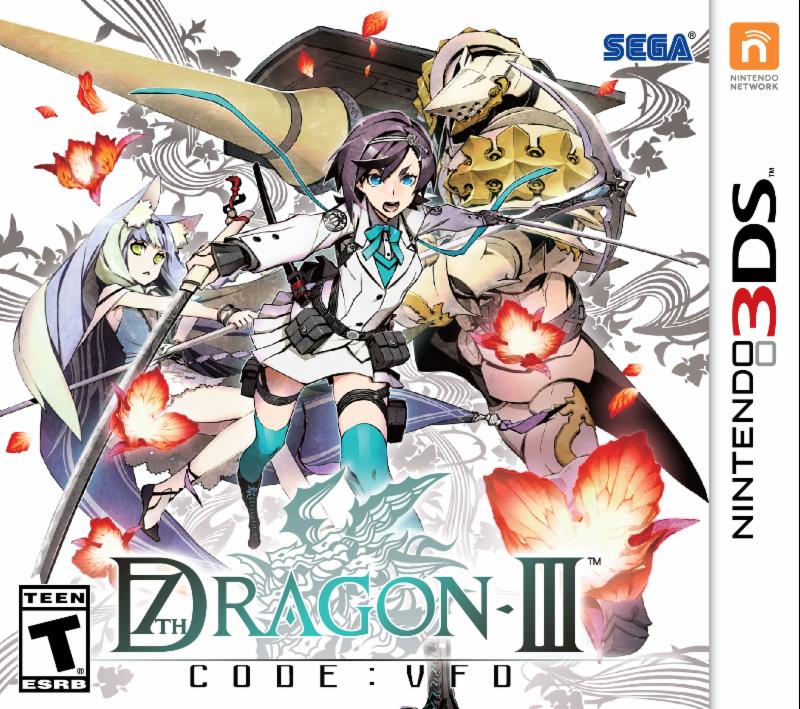
When Sega sent me a code for the game a few months back, I was in no rush to play. The screenshots looked pretty, and the trailer was nice, but at a time when 3DS role-playing games I’d been looking forward to for a year were letting me down, how could this relatively unknown game with an odd name deliver?
I wasn’t sure it would, right up into character creation. I generally prefer my Japanese RPG protagonists be named characters with some sort of established backstory. Here I was given a choice of pre-built bodies with a few different colour choices and four character classes to choose from. Granted Sega went the extra mile here, giving me 40 different voice actors to choose from, but what difference does that make when you’re just the generic hero of the day?
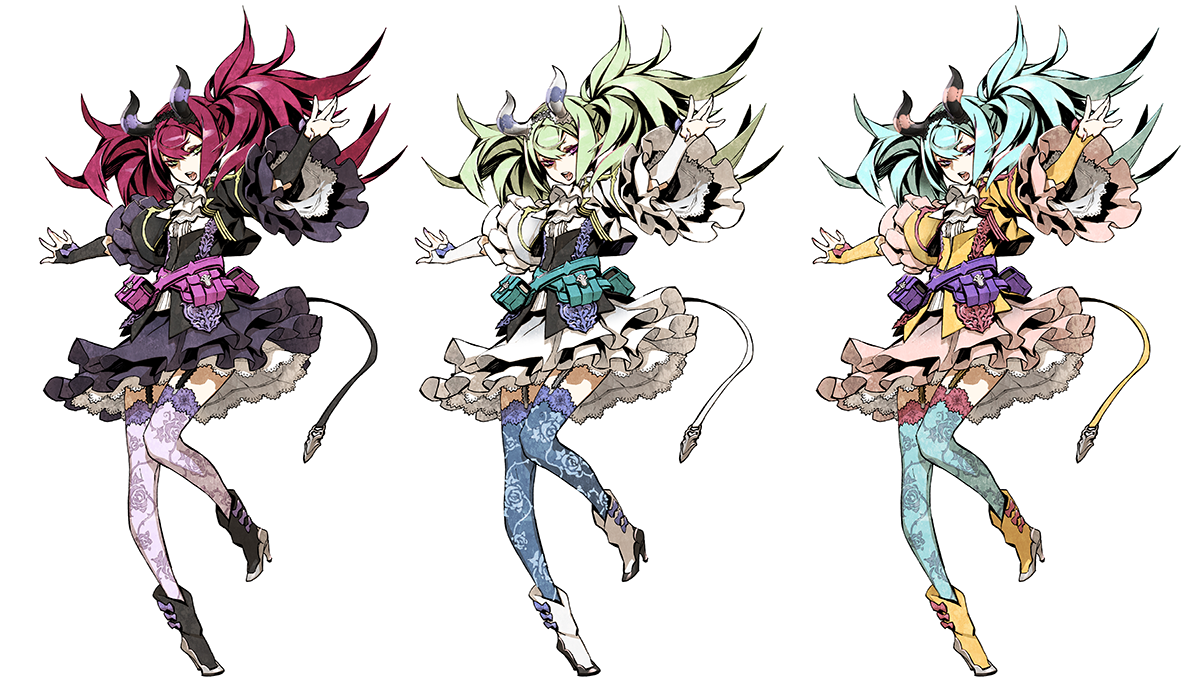
As it turns out, I wasn’t. Fahey, my pistol-wielding, creature-hacking Agent, endeared himself to me within moments of his first adventure, leading a team of three created characters into the Nodens virtual reality game. That initial journey led to recruitment by the corporation as the head of a crack team of dragon hunters, tasked with ridding the world of the reptilian plague that threatens all humanity. Between the Japanese voice acting, sharp character designs and interaction with the game’s colourful cast of NPCs, Fahey felt less like my creation and more like a fully fleshed-out character. Perhaps it was just my imagination, but that’s what role-playing is all about, right?
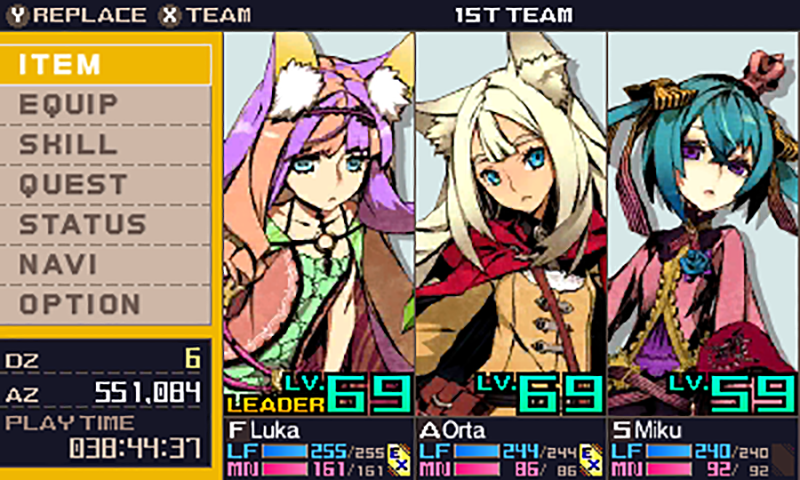
Eventually those three characters become six, and those six become nine. At key points in the story additional character classes and races are unlocked, allowing the player to form up to three parties of three characters each.
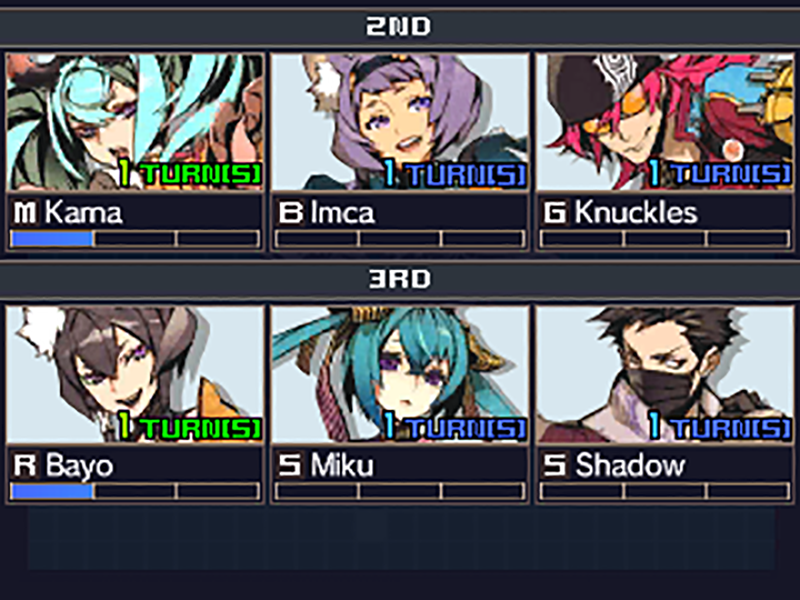
While the main party plays, characters in the second two teams provide support. A single back line character can team up with a main to help break through a strong enemy’s defences. When each member of a backup team has meter handy, all three can deliver a series of group buffs to the main party.
And just when you’re getting comfortable with the main party/support dynamic, the game will split all three parties up, forcing you to learn new group dynamics in order to survive.
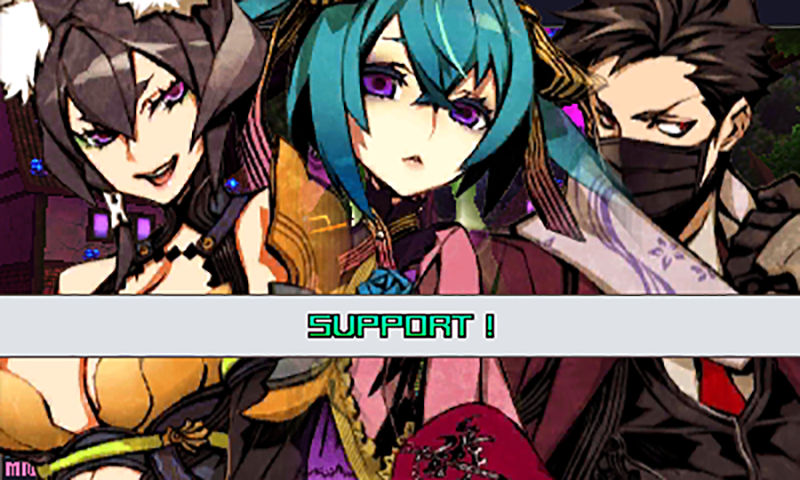
The party system is deep and flexible. The chances of any two players winding up with the exact same team by the end of the game are incredibly slim. While I aimed to have one of each of the game’s eight character classes represented (with two Samurai representing that class’ two different weapon styles), others might find a team combination that works for them and duplicate it two times over.
I wouldn’t blame them, as each of the classes plays differently from the others, and keeping track of it all can be daunting. My Agent aims to hack enemy creatures in order to deliver devastating debuffs and high damage. My Duelist relies on the luck of the draw, obtaining random cards at the beginning of each turn to power traps and summoning attacks. My God Hand (secretly my favourite) relies on building up combo points until she can pummel the living hell out of just about anything.
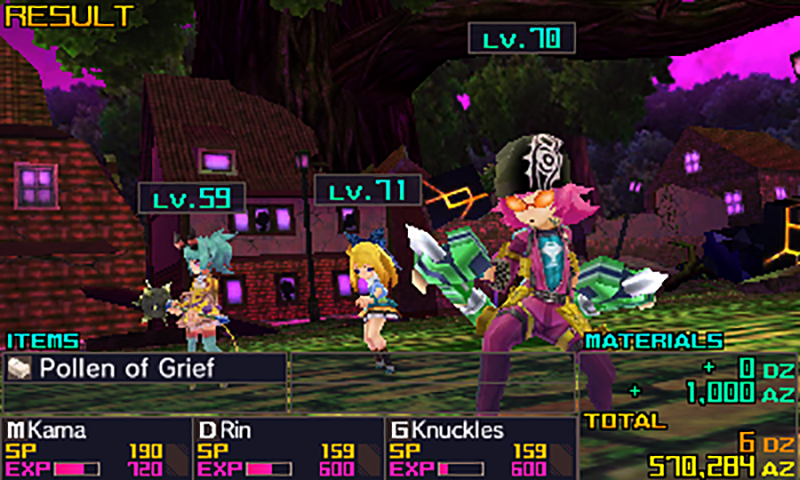
Further complicating matters in the best way possible, characters earn skill points through battle, which can be spent on enhancing skills and stats. Which skills and stats you focus on depends on your personal play style for that particular class.
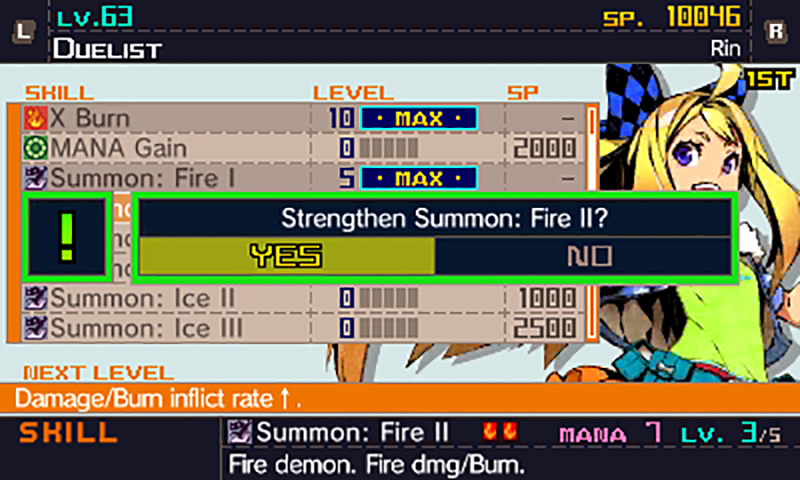
It’s a deep system that begs a second playthrough, or at least substantial post-game playing around to explore all of the possibilities. The play variety also makes the game’s frequent random encounters more tolerable. They’re less of an annoyance and more of an opportunity to hone your strategy for when the dragons show up.
And there are plenty of dragons in 7th Dragon III Code: VFD. They’re kind of the whole point. While there are many fixed dragon encounters in the game, on most maps the powerful creatures roam freely in limited numbers, separate from standard random encounters. Run into one or spend too much time in a basic encounter with one nearby, and it’s time to show the game what you’re really made of.
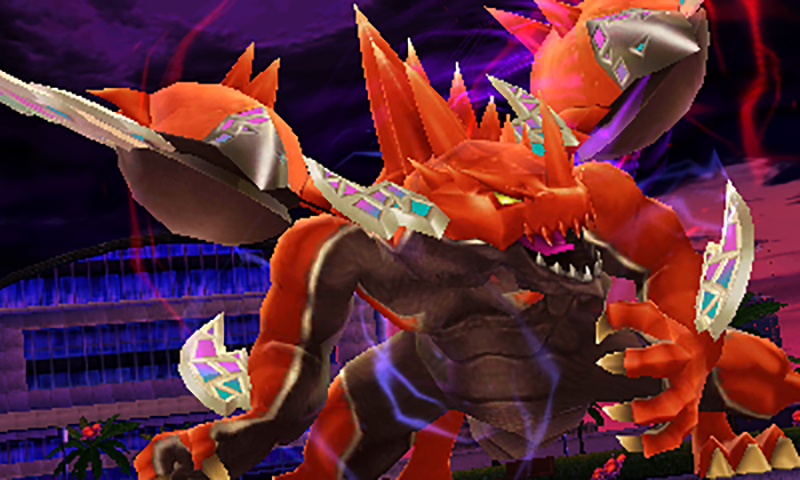
Dragons come in all shapes and sizes, from standard winged fantasy beasts to armoured giraffe-like creatures, rising up beyond the border of the 3DS screen. The first couple of encounters with each type are generally exhilarating, feeling out the enemy and learning what works against them and what doesn’t. Once you’ve got their number, however, the excitement fades.
Maybe Sega went a bit too dragon-heavy here, but towards the end of the game it’s pretty much hopping from beast to beast, regular random encounters nothing more than a nuisance. I suppose that’s just what happens when the whole game hinges on you becoming the greatest dragon hunter on the planet.
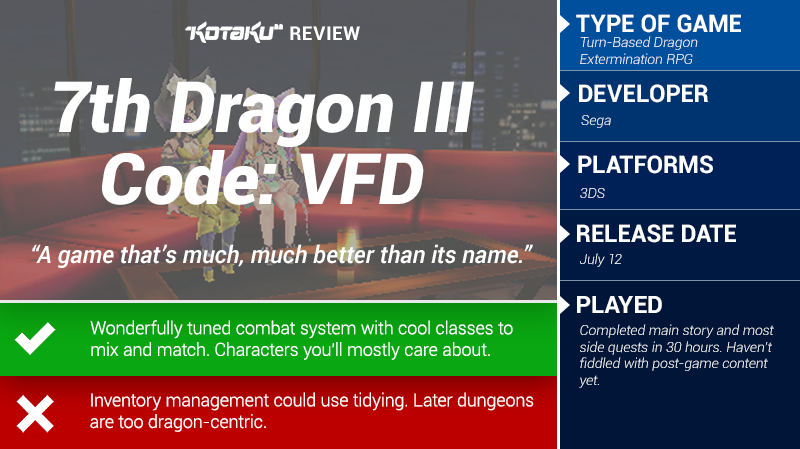
Besides, killing dragon is the crux of one of 7th Dragon III Code: VFD’s numerous side activities. Downing the beasts provides players with points needed to construct new buildings on the Nodens campus.
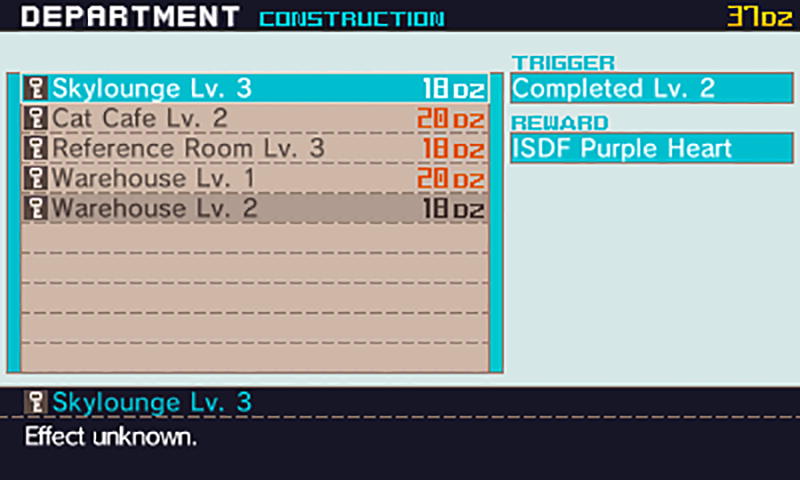
Constructing new Item levels grants players access to more powerful equipment, while skill levels do the same for class skills. Most of the construction tasks unlock new areas for players to explore, new NPCs to interact with and new sidequests to undertake.
My personal favourite construction project (aside from the healing Cat Cafe) is the Skylounge, where the player’s characters can take various NPCs on a series on increasingly intimate dates, generally culminating in a special item. Also suggested sex. Hey, I just like sidequests.
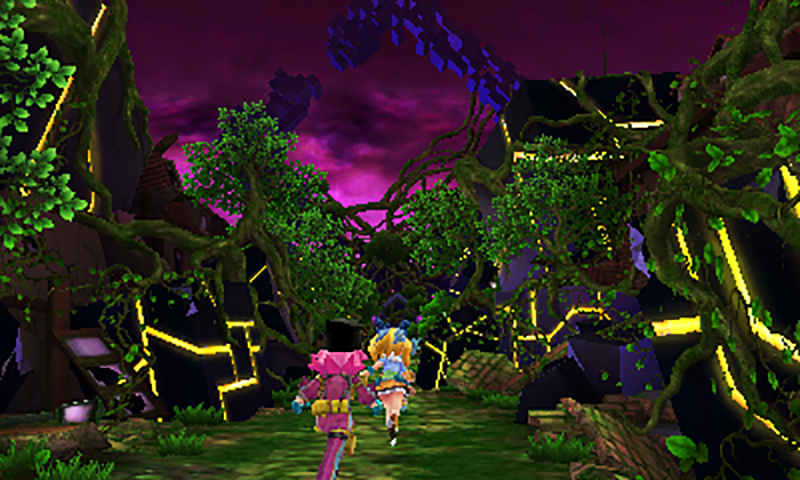
7th Dragon III Code: VFD takes all my favourite features of a Japanese role-playing games and wraps them in a very pretty package. Flashy turn-based battles with plenty of room for strategy, varied character classes with several different avenues of advancement, plenty of semi-optional activities to keep me occupied when I need a break from the main quest — these are things I crave. Toss in a random cat cafe, a mini dating sim, a healthy sense of humour and the odd washed-up Power Ranger wannabe, and I’m in JRPG heaven, silly name be damned.
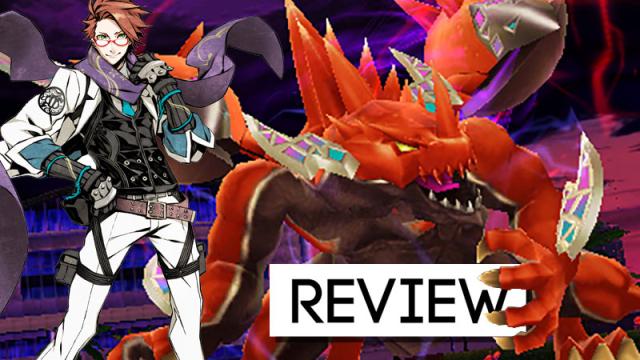
Comments
3 responses to “7th Dragon III Code: VFD: The Kotaku Review”
So when is this actually out?, not this morning (13/7) obviously even though it should be.
.
Another copy/paste from the US site, Sega has no plans to bring this to Australia as of 19/5 (even though it’s on their sites twitter feed nonsense). Please if you’re going to copy/paste a review, note which region it’s getting released in.!!!!!!!
http://www.siliconera.com/2016/05/19/sega-currently-no-plans-bring-7th-dragon-iii-code-vfd-europe/